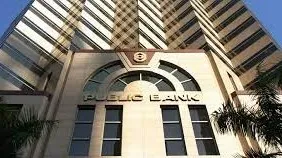
Stable profits buoys Public Bank HK’s resilient credit profile
However, higher funding and credit costs will weigh down on profitability.
Public Bank Hong Kong’s credit profit is expected to remain resilient over the next 12 to 18 months, buoyed by its stable capitalization and profitability, reports Moody’s Investors Service.
In its latest ratings commentary of the bank, Moody’s noted Public Bank HK’s modest asset quality, very strong capitalization, good liquidity supported by a concentrated deposit base and low reliance on market funding, and good profitability.
Capitalization is expected to remain strong and profitability stable at about 0.9%, supported by Public Bank HK’s net interest margins, which are expected to come higher than other Hong Kong banks rated by Moody’s.
“PBHK's profitability will be underpinned by the higher interest environment and better returns from its fixed income investments. However, Moody's expects the bank's profitability to be weighed down by higher funding costs and credit costs, which the agency expects to be in line with its historical average of about 60 basis points (bps) over the next 12-18 months,” it added.
However, asset risks will rise as borrowers’ debt repayment capacity is weighed down by increasing rates.
ALSO READ: Public Bank posts 22.6% net profit surge in Q1
Public Bank HK’s problem loan ratio deteriorated to 1.2% as of end-2022, from only 0.91% in end-2021, hit by its property-related loans, unsecured personal loans, and hire purchase license loans.
“Nevertheless, Moody's does not expect a material rise in credit costs because of the bank's high collateral coverage ratio, which was 83.2% as of the end of 2022. The moderate economic recovery in Hong Kong SAR, China and mainland China will also be a mitigating factor,” the ratings agency said in Public Bank HK’s latest ratings commentary, in which Moody’s affirmed its A3/P-2 deposit rating for the bank.
Furthermore, market risk arising from the bank’s investments are “not significant”, says Moody’s, because the holdings are classified at amortized costs, has an average duration of less than one year, and consists mainly of short term instruments issued by governments and financial institutions.
















 Advertise
Advertise








